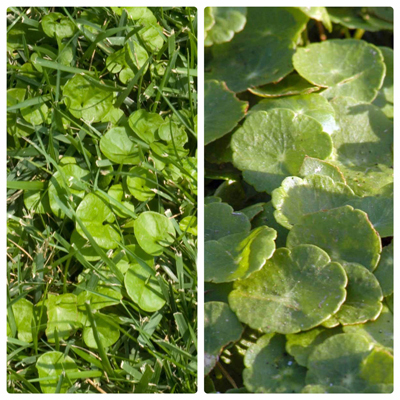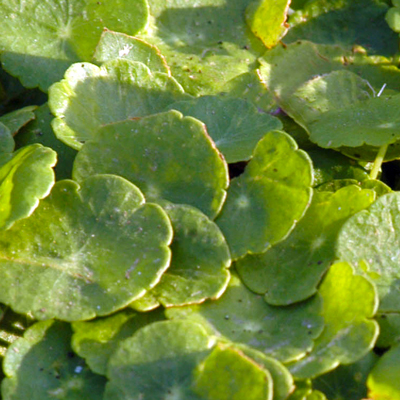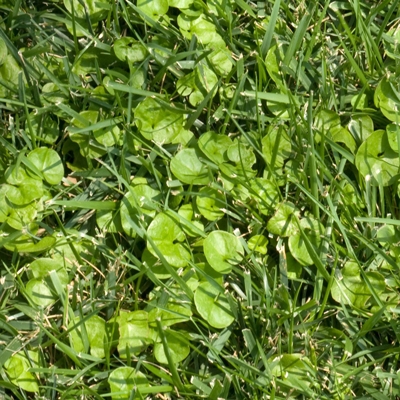Question of the Week – Number Two: January 28, 2021

“I think I have dollarweed in my St. Augustine. It’s crowding out the lawn. What will control it, and when should I apply it?”
Start by identifying the weed accurately.

Dollarweed has silver-dollar-sized leaves that are round, scalloped and extremely glossy. It stands 3 or 4 inches tall.

Dichondra, by comparison, is a trailing plant that grows to be 1 to 1-1/2 inches tall. Its leaves are not glossy. They are kidney-shaped and somewhat cupped.
Both of these weeds can be difficult to control because it’s hard to keep weedkiller sprays in place on their leaves. The droplets bead up and slide off the glossy leaves of dollarweed and they roll down the funnels created by the cups of the dichondra leaves.
Use a broadleafed (post-emergent) weedkiller spray containing 2,4-D. You’ll need to read and follow label directions carefully to avoid damage to desirable plants nearby. However, if you apply it carefully with a pump sprayer set to deliver a comparatively fine mist, and if you include one or two drops of a liquid dishwashing detergent per gallon of spray to help the herbicide hold tightly to the leaves, you should see good results.
If you’re in South Texas you may already be seeing these weeds growing actively in your turf, but for most of the state, the prime time to spray won’t come for a couple of months. I just wanted to get this information out there ahead of the big advertising push that many companies put out on spring weed-killing products so that you could know what the enemy is that you’re fighting.
